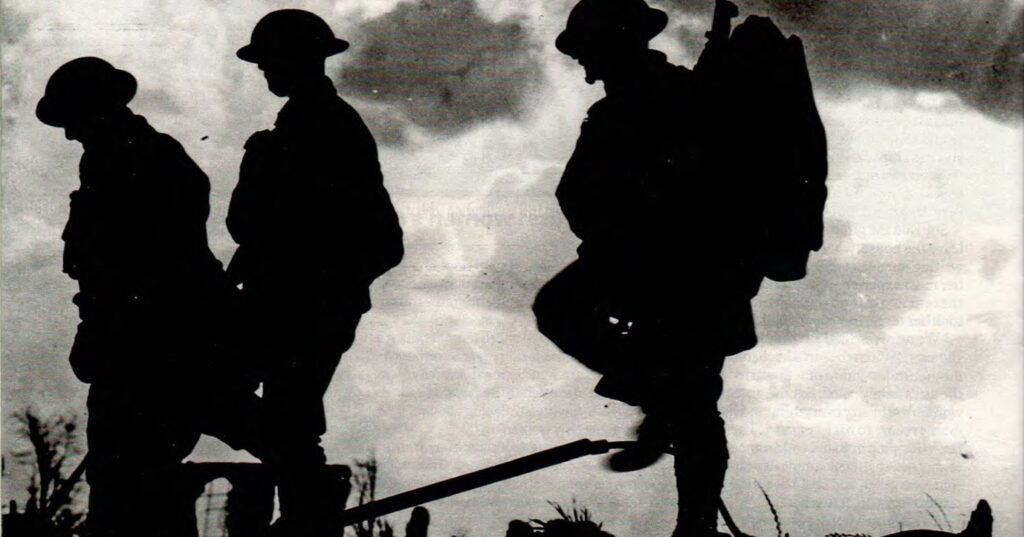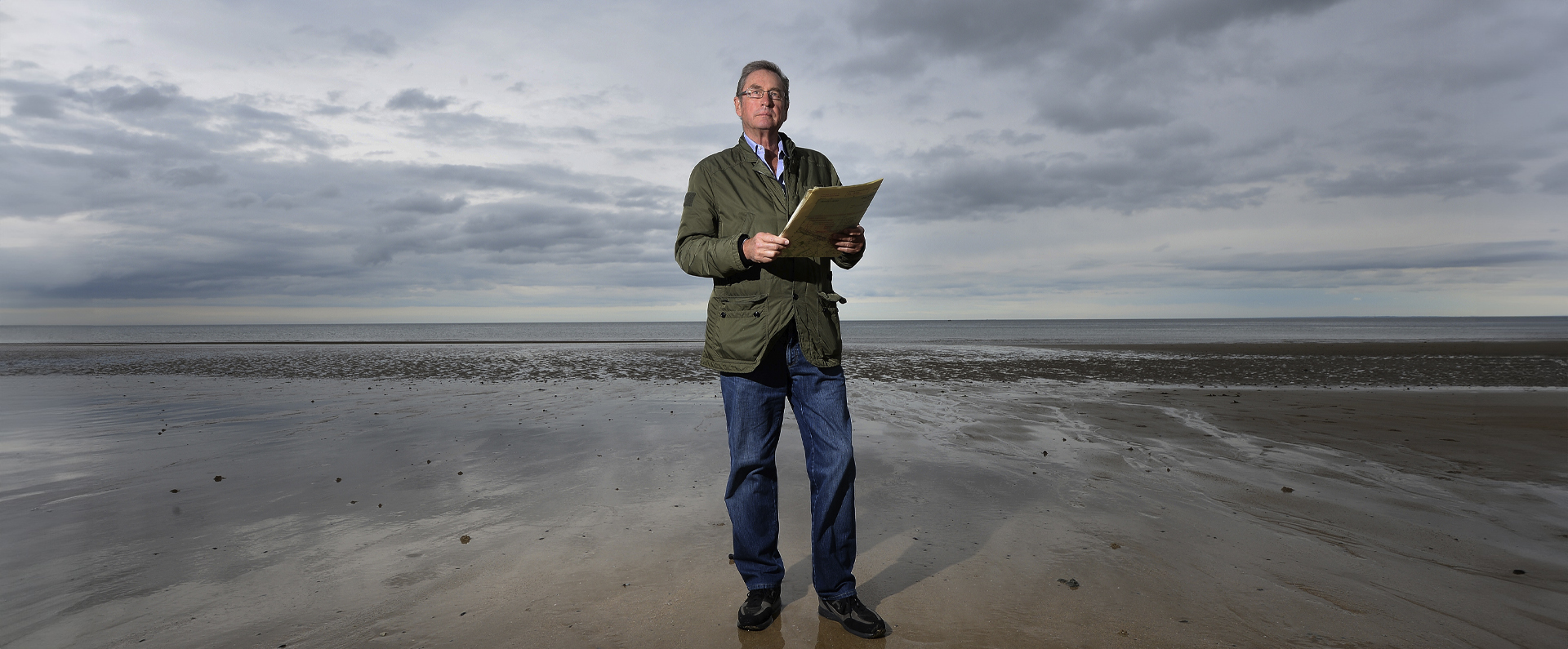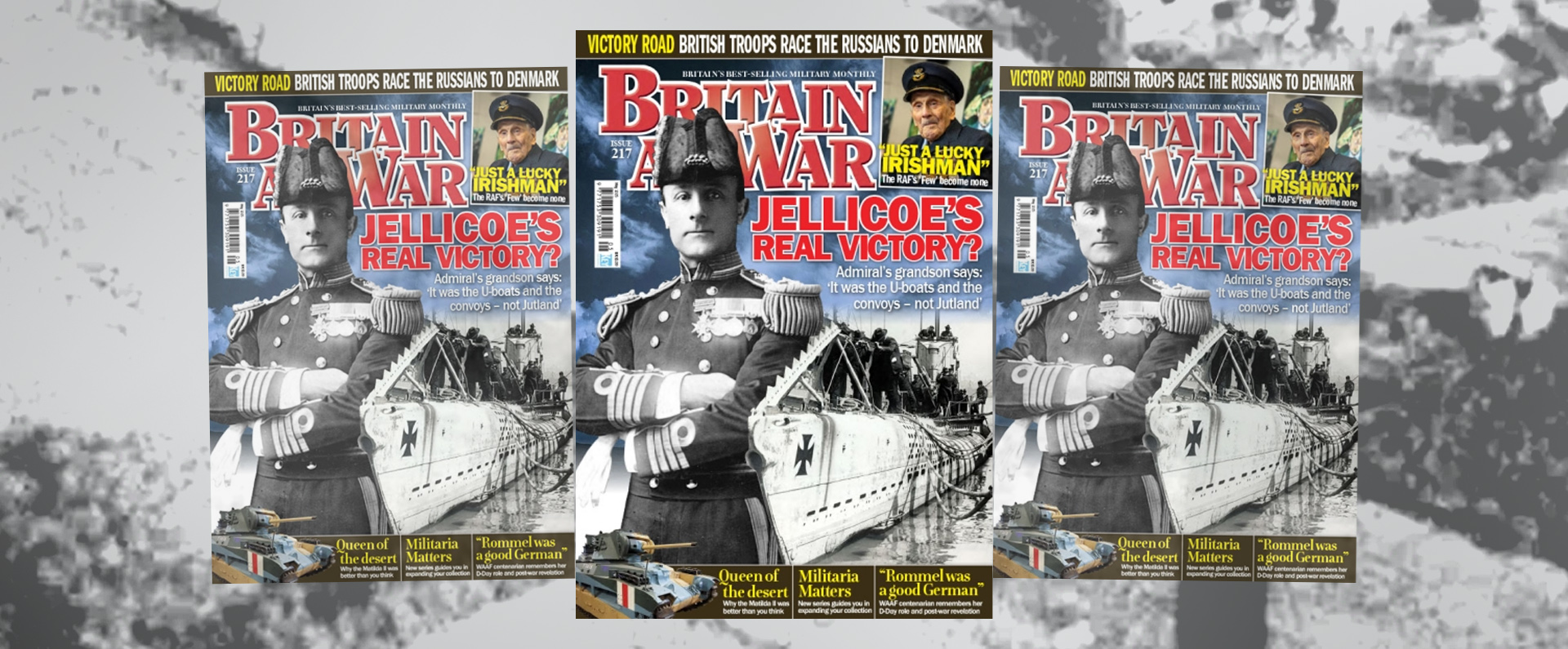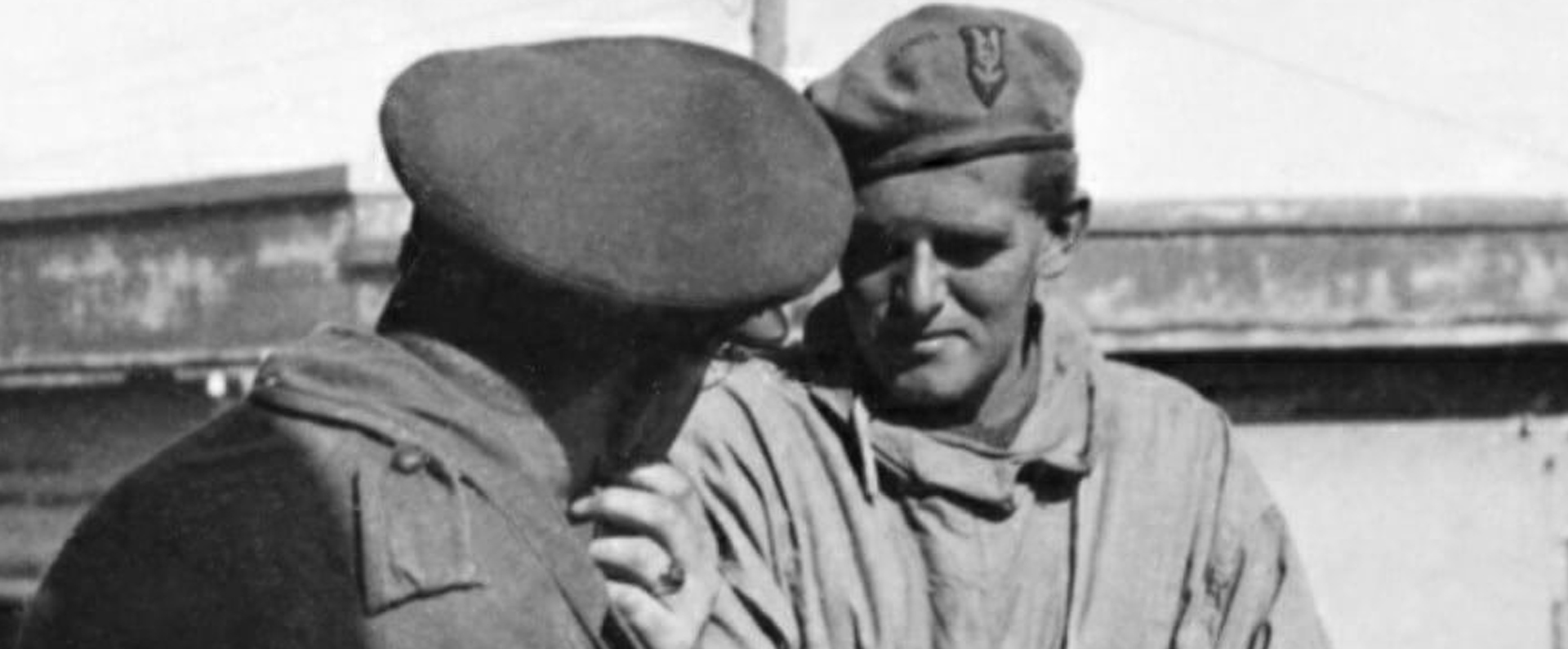
Published in the Sunday Times Magazine on 06 August 2017.
Captain Noel Chavasse
Friday, August 4 2017, was the centenary of the death of Captain Noel Chavasse VC & Bar MC, one of the bravest soldiers who has ever lived. To mark the centenary of his death, Lord Ashcroft wrote an article for The Sunday Times Magazine.
In the late spring of 1915, Captain Noel Chavasse, a 30-year-old army doctor, was busy treating the wounded on the Belgian front. He would go on to become the only man during the Great War to receive the VC and Bar, the equivalent of two Victoria Crosses, But already he was renowned for putting the needs of his men before his own safety and for making full use of his athletic prowess in the trenches.
An unnamed soldier who witnessed one of Chavasse’s acts of bravery wrote: “While on duty as a signaller at Battalion HQ, I received a telephone message from the front line, ‘Man severely wounded in head, could doctor come up at once?’ In daylight, only the communication trench was used, and it took at least 20 minutes to reach the front line.
“To my surprise, a few minutes after giving the doctor the message, the front line sent word, ‘OK, the doctor is here.’ Instead of using the communication trench, he [Chavasse] had sprinted up the road — in full view of the enemy — in order to reach the wounded man in the shortest possible time.”
Not long after, Chavasse’s battalion saw action at Hooge, near Ypres, where Chavasse continually went into no man’s land for nearly 48 hours until he was satisfied that there were no more wounded men who needed treatment. For his heroic efforts, he was awarded the Military Cross (MC) but, as always, his priority was his men. After the action, he asked one of his sisters to buy 1,000 pairs of socks and other comforts for the battalion out of his own money.
In a letter home written on September 28, 1915, Chavasse wrote of his frustrations at the terrible loss of life: “I have been the witness of as gallant a charge as ever took place, which has ended, so far as we are concerned, in our line here being exactly the same as it was before; but two regiments at least are cut to pieces. We cannot yet judge the full loss of life. What good it has or could of done, only those who have full information of the whole battle-line can tell. Probably our show was only a little diversion to attract attention from the really big issues at stake further south.
“I doubt if much attention will be paid to it in dispatches; yet it was the biggest thing that has happened since we came out into this tortured spot, and as usual everybody responded to the call of duty, and blood was poured out like water, and lives cast away as carelessly as old boots.”
Chavasse’s first Victoria Cross, Britain’s most prestigious decoration for bravery, was awarded in 1916 for his actions in another disastrous summer of trench warfare. In early August, the doctor and his battalion were moved to trenches in front of Guillemont, France. Despite being unable to reconnoitre the enemy positions, the men were still ordered to go over the top at 4.20am on August 8. Within a few hours, they had sustained 189 casualties out of 600 men.
Chavasse tended the wounded all day under heavy fire, frequently in view of the enemy. During the night, he searched for injured men directly in front of enemy lines.
The next day, he recruited a stretcher-bearer and, under heavy shell-fire, carried a critically injured man 500 yards to safety. On the return journey, Chavasse was himself wounded but it did not stop him. That night, with the help of 20 volunteers, he rescued three more wounded men from a shell-hole just 25 yards from enemy lines. He also buried the bodies of two officers and collected numerous identity discs from dead infantrymen. During those two long days and nights, Chavasse saved the lives of some 20 seriously wounded men.
His parents heard through official channels that he had been wounded but, almost immediately, they received a letter from their son playing down the injury.
In a short note dated August 11, 1916, which typically made no mention of his own astonishing bravery just two days earlier, he told them: “Don’t be in the least upset if you hear that I am wounded. It is absolutely nothing. The merest particle of shell just pricked me.”
Chavasse was awarded the VC “for most conspicuous bravery and devotion to duty” and his citation, announced in the London Gazette on October 26, 1916, concluded: “His courage and self-sacrifice were beyond praise.”
Friday marked the centenary of Chavasse’s death. He was killed on August 4, 1917, at the third Battle of Ypres and was awarded his second VC posthumously.
On the eve of the anniversary of his death, I found myself standing in front of his grave at Brandhoek New Military Cemetary, near Ypres. At first glance, his gravestone seems no different from the other simple memorials to the fallen arranged in neat rows at the cemetary. On closer inspection, you can see the images of the two VCs, each bearing the words “For Valour”. Below them is a quote from the Gospel of St John, chosen by Noel’s father, then the Bishop of Liverpool. It reads: “Greater love hath no man than this, that a man lay down his life for his friends.”
As I read those words in the warm, morning sunshine, I felt deeply moved. Eight years ago, as part of my attempts to champion gallantry and as the owner of the world’s largest VC collection, I became the humble and proud custodian of his medal group, which is now on public display at the Imperial War Museum in London. Accompanying the medals were hundreds of documents, including scores of family letters that Chavasse exchanged with his parents and other close relatives. These letters provide a unique insight into his unrelenting self-sacrifice and sense of duty: splendid characteristics that ultimately cost him his life.
Noel Godfrey Chavasse, the younger of identical twin boys by some 20 minutes, was born in the vicarage at St Peter-le-Bailey, Oxford, on November 9, 1884. He was the son of the Rev Francis Chavasse and his wife, Edith (née Maude). The twins were so small and weak at birth that their christening, by their father, was delayed until December 29. While still only a few months old, both twins were struck down by typhoid and their parents had them professionally photographed in case they did not recover.
Noel was one of seven children born to the couple. From the age of 12, he and his twin, Christopher, attended Magdalen College School in Oxford. When the Rev Chavasse became Bishop of Liverpool in 1900, the family moved to the city and the twins were privately educated at Liverpool College. In 1907, Noel graduated with a first in natural sciences from Trinity College, Oxford, where Christopher also studied.
Afterwards, Noel stayed on at Oxford to study medicine. He was a talented sportsman, earning “blues” for athletics and lacrosse. He and Christopher represented Britain in the 1908 London Olympics, both running the 400 metres.
After qualifying as a doctor in the summer of 1912, Noel became house physician at the Royal Southern Hospital, Liverpool, and the following year he was appointed house surgeon at the same hospital. As war loomed, Chavasse was commissioned as a lieutenant into the Royal Army Medical Corps (RAMC) and, after the outbreak of hostilities, he served in France and Belgium with the 10th King’s (Liverpool Scottish) Regiment.
Many of the letters focus on how he found himself constantly treating severely wounded and dying men, several of whom remained alive for many hours, or even days, despite horrendous head injuries.
He also wrote often about the sympathy he felt towards those men suffering from shell shock, some of whom were sentenced to death for cowardice. In a letter dated March 16, 1915, he wrote: “Like all Officers I have met the strain and constant, though often sub-conscious, tension of trench warfare [which] is wearing out his [a soldier’s] nerves. The bravest fellows about after six months feel themselves getting jumpy, and constantly have to keep a hold upon themselves. I am very sorry for them.”
The pressures on Chavasse were immense but his letters home never reflected any sense of self-pity. In a letter to his parents dated May 31, 1915, he mentioned in passing: “I am now in the proud position of being the only regimental doctor who had not broken down.” He added: “I am very glad I am so fit because I have tremendous attachment to the regiment, and could not bear to leave it. As for the war itself it is beginning to bore me a bit, and I shall not be sorry when it is over.”
When his first VC was awarded in October 1916, for bravery at the Somme, the Liverpool Daily Post & Mercury said of the city’s local hero: “Few men have inspired such wonderful affection for themselves amongst the ranks of their colleagues … His battalion almost regard him as their mascot.”
A Canadian machinegunner told the paper of Chavasse’s VC action: “I was up in the line that day, and the men were talking a lot about the fine courage of Captain Chavasse. It was absolute hell all day … Hell would have been heaven compared to the place he was in, but he never troubled about it.”
The paper also quoted a stretcher-bearer who said: “At times it was absolutely impossible to stand up without being hit … The Captain took no more notice of the enemy’s fire than he would of a few raindrops, and even when the bullets were whistling all round he didn’t get in the least bit flurried in his work. He made us all feel that it was an honour to work with him.”
Chavasse received his VC from George V at an investiture at Buckingham Palace on February 5, 1917, and, afterwards, there was a family party that Gladys, his fiancée, attended. At the event, Noel Chavasse was deeply moved and inspired by the king, later telling Gladys: “What a man! I could readily die for him.”
Sadly, it wouldn’t be long before he got the chance. On July 2, 1917, Chavasse wrote to his parents telling them of his plans to marry and of his pride in being a VC recipient: “I don’t think I really earned it as many have done, but deep in me I prize it more than I can say.”
By the end of the month, the battalion had been moved to Belgian trenches near Wieltje, situated to the northeast of Ypres. Preparations were made for what would become the Third Battle of Ypres — an attempt to recapture the infamous Passchendaele Ridge. The new offensive began on July 31 and the Liverpool Scottish, poorly protected against the enemy’s mustard gas, lost 143 men.
On the first evening of the battle, Chavasse received a head wound from a shell splinter: his skull may have been fractured. He had his injury bandaged but he refused to be evacuated. Time and again, under heavy fire and in appalling weather, he went out into no man’s land to search for, and attend to, the wounded.
It is believed that he received two additional wounds during this time, one of them serious enough to have him removed from the battlefield. Once again he refused to go, insisting that he would not leave his comrades. With virtually no food, in great pain and desperately weary, he saved numerous lives until, in the early hours of August 2, he was finally taking a rest at his first-aid post when it was struck by a shell.
Everyone in the post was either killed or wounded. Chavasse himself suffered at least six injuries but he crawled for half a mile to get help for the others. He was taken through Ypres to the 46th Field Ambulance and then on to the 32nd Casualty Clearing Station, but his face was unrecognisable and he had a serious wound to the abdomen.
Despite undergoing surgery, Chavasse succumbed to his wounds between 1pm and 2pm on August 4, 1917, the third anniversary of the outbreak of the war. He was 32 years old. A telegram informed his devoted parents. His fiancée, Gladys, was distraught: the couple had intended to get married later that month in France, since it was impossible for Chavasse to come back to Britain.
The Bar to Chavasse’s VC — the equivalent of a second VC — was announced on September 14, 1917, when the citation praised his “extraordinary energy and inspiring example”.
Among those serving with him, Chavasse had been known affectionately as simply “the Doc”. The Regimental Historian of the Liverpool Scottish wrote: “It is difficult to find words to express all that the Doc’s life and example meant to the Liverpool Scottish. There was never a man who was better loved by his officers and men alike: there never was a man who gave himself more unsparingly in the service of others. His bravery was not the reckless, flamboyant type but the far finer bravery that sprang from his determination that nothing should stand in the way of whatever he considered his duty.”
Gladys is understood to have visited Chavasse’s grave in Belgium several times and each year she marked the anniversary of his death with an “In Memoriam” notice in The Times. She also kept a photograph of him, his Officer’s Advance Book, his writing case and his miniature VC until her death in 1962, when she was fatally struck by a car while holidaying in France.
Christopher Chavasse, who was awarded the MC for his own bravery, survived the war. He provided an insight into his own grief in a letter written, in 1961, to a woman whose identical twin sister had just died. Christopher, who was 76 when he penned his letter, told her: “How truly I can sympathise with you, as I still mourn my Noel every day of my life, and have done so for 44 years, and shall do till I see him again — quite soon now.” Christopher, who was Bishop of Rochester until 1960, died in March 1962, aged 77.
After paying my respects besides the grave of Britain’s bravest Great War soldier, I paused to remember some of the final, dying words that Chavasse had whispered to a nurse so that she could pass them on to his fiancée. “Give her my love,” he said. “Tell her duty called, and called me to obey.”
Download a PDF of the original Sunday Times Magazine article
For more information, visit:
LordAshcroftOnBravery.com


